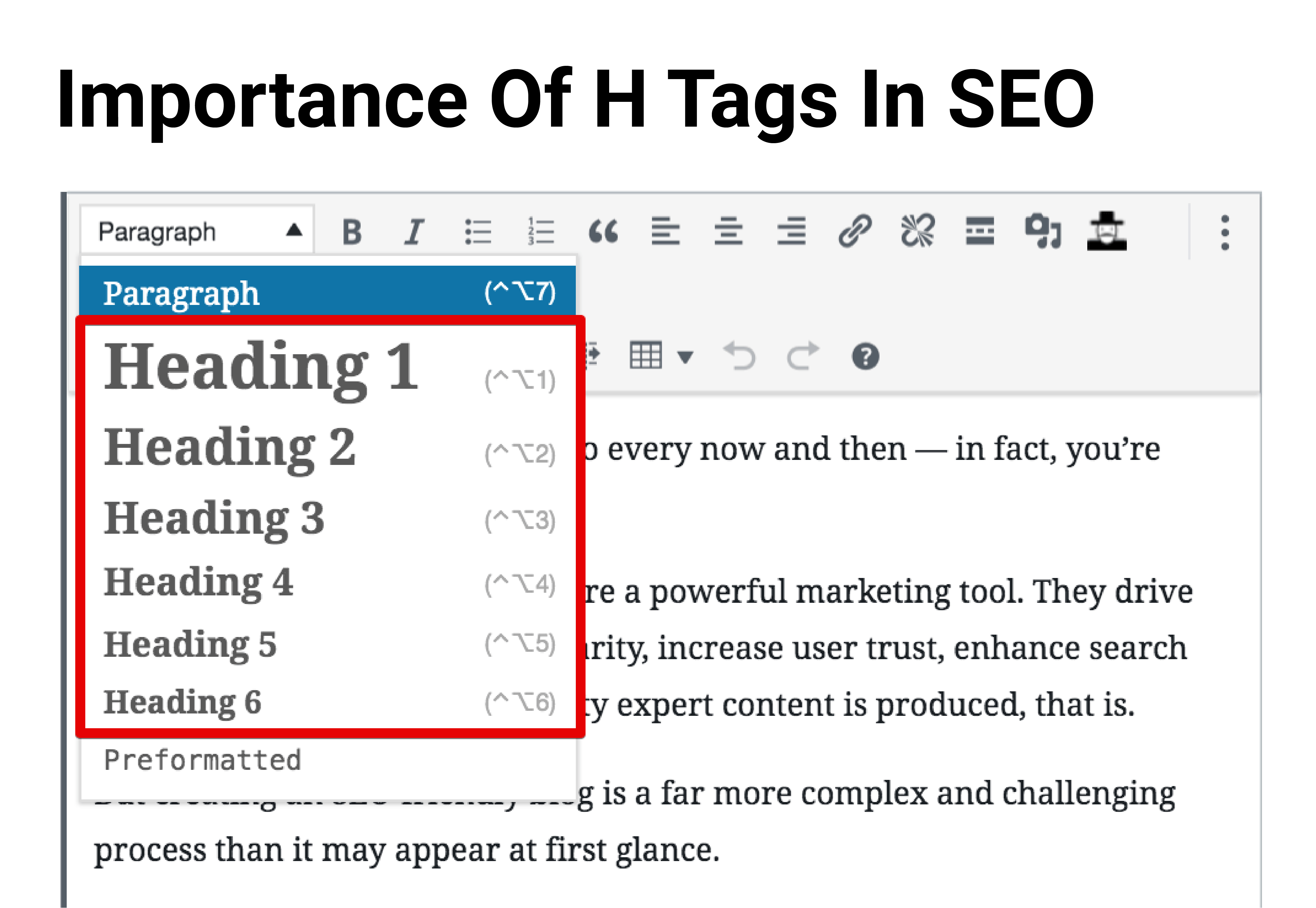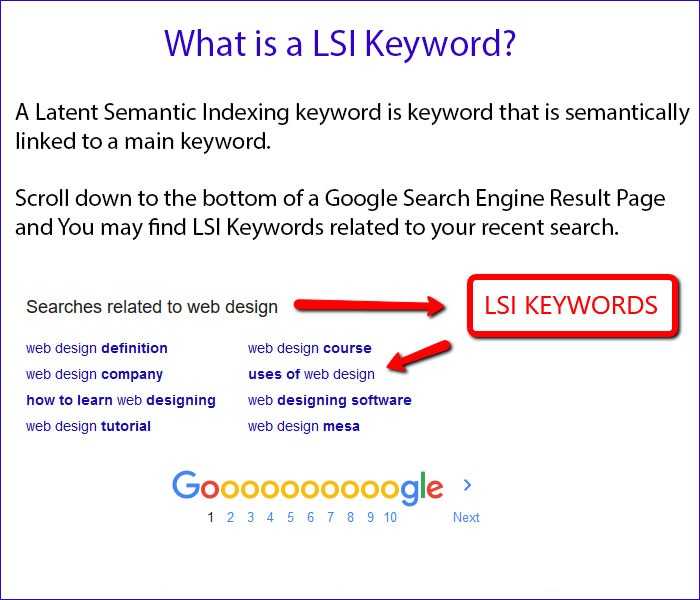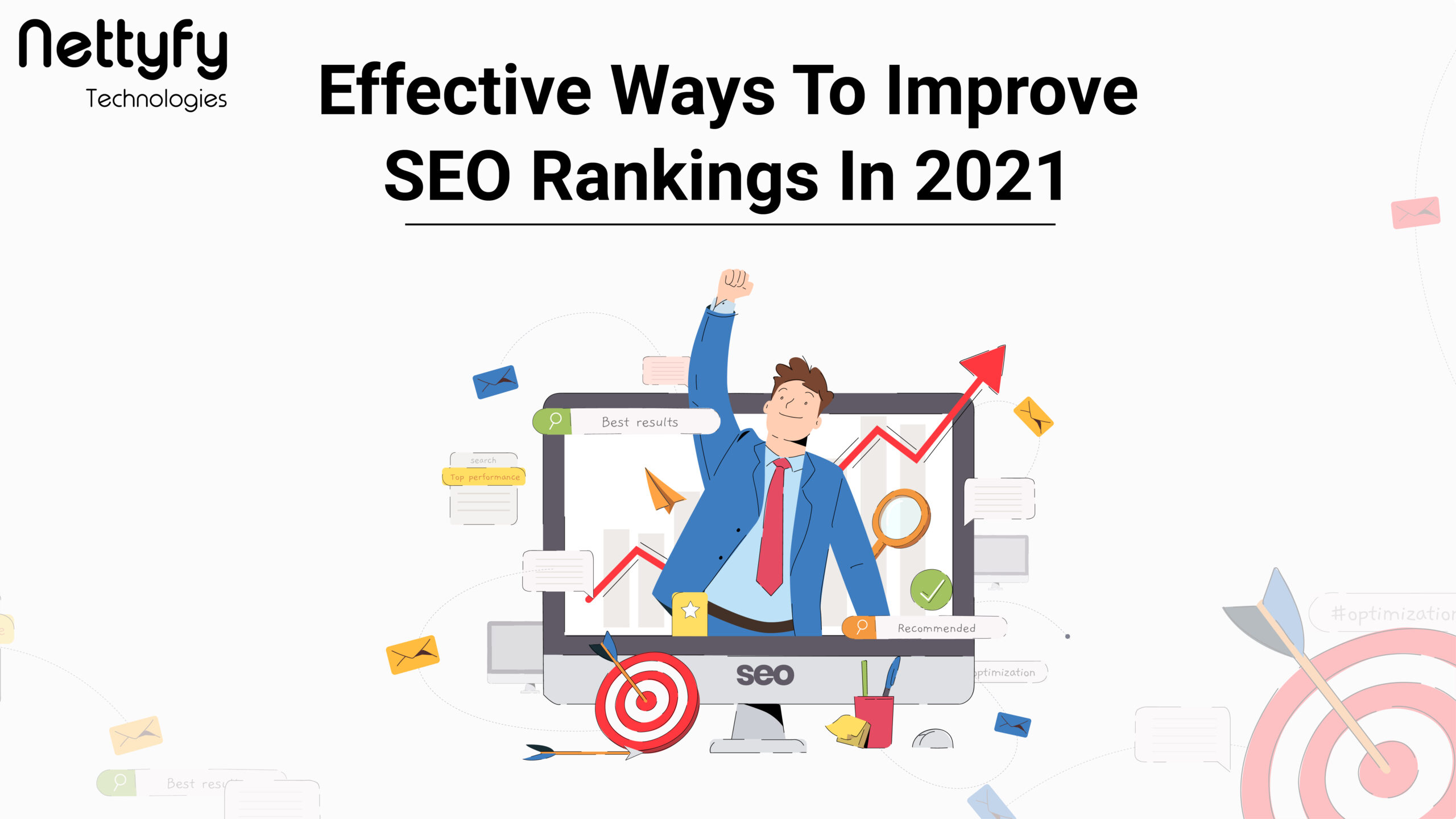Before we discuss the Effective Ways to Improve SEO Ranking in 2021, What comes to mind when you see the term “SEO“? Search engine optimization is the process of improving the quality and quantity of website traffic to a website or a web page from search engines. If you want to rank your website on search engines, you need to take help from the Best SEO Company in USA and start growing.
If you’re relying on people to find you through a Google search, search engine optimization (SEO) needs to be at the top of your priority list. Search Engine Optimization (SEO) refers to a series of techniques for helping your site rank higher in search results. There is no shortage of ways you can improve SEO on your website.
Why Need SEO?
● Nobody is able to find you or you won’t be able to generate leads for your business if your website is not ranking on search engines.
● 93% of users search on the internet before making any decision or to find something.
● Top result on Google has 35% more chance of getting clicked. That means if you’re not number one on the page, you just missed out on a third of potential traffic.
● What’s even more astonishing is that 75% of people won’t even click on the second page of the search results.
● So now you can understand how important it is to rank your website on search engines.
Here are the Effective Ways to Improve SEO Rankings in 2021
1. Make Sure Your Website Is Secure HTTP Connection
Sites must have this, no exceptions! While Google is pretty secretive about their algorithm, SEO professionals have done enough testing to know that your SSL certificate is a known ranking feature for sites.
In layman’s terms, when your URL starts with https://, that means it’s certified as secure and safe. If it starts with http://, it’s not certified. Google Chrome has actually started warning users when a site isn’t certified. Always make sure your SSL certificate is up to date and functional!
2. Catchy Title Tags
This one is simple! A title tag is the bolded headline on the SERP. Make sure it includes your primary keyword and stays between 60-70 characters for optimal results.
3. Meta Descriptions

A meta description is the piece of text in the SERP underneath the bolded title tag. Make sure it includes your primary keyword and remains around 155-160 characters.
While your meta description is not as critical of an SEO ranking factor as the title tag, it can greatly impact your click through rate. Google will bold primary keywords included in the meta description, which can easily draw in the user’s attention.
4. Properly Optimized Images
Pictures and other images are great for your website. But you need to make sure they are optimized properly if you want these images to improve your SEO ranking. I’m referring to factors such as the file format and size. Huge images can slow your page loading time, which, as I’ve said, hurts your ranking. Resize or compress your images to optimize them. You can also use your images to sneak in keywords by naming them accordingly.
For example, let’s say you have a website that sells running shoes for men. Instead of naming an image something like “image1,” you could name it “best running shoes for men”
You can also strategically use keywords in the title of your image as well as the caption or description.
5. Use Of Proper Headers On Your Webpages

Not only do headers make your content more readable and easier to understand for humans and search engines alike, there is a strong correlation between Google search rank and the use of header tags in the body of your content. Header tags are also a great way to show the structure of your content and emphasize your key points.
6. High Quality, Useful And Relevant Content
Having high-quality content on your website is one of the best ways to increase traffic and improve your search rank. In fact, Google itself said in a blog post on page experience that having great, relevant content on a page is more important for ranking factor. Make sure your content is mistake-free, keyword-rich, mobile-optimized, written to address the specific needs of your target audience, and includes valuable links to additional internal and external content.
7. Improve Page Load Speed
Both Google and Bing take page-loading speed into account in their website ranking algorithm. Research shows 40% of visitors will abandon websites if the page takes longer than 3 seconds to load. What’s even more shocking is that 80% of those visitors won’t return to that website.
Users may leave your site if they have to wait even just an extra few seconds for each page to load. That would hurt your dwell time, increase your bounce rate and reduce the number of pages viewed – all of which could hurt your SEO ranking.
There are many ways to increase page load speed, some of which include using caching plug-ins, making sure the code is clean and streamlined, optimizing image sizes, reducing the number of plug-ins, and minimizing redirects.
8. Make Your Website Mobile Optimized
As of April 2015, Google has started to penalize sites that are not mobile optimized by bumping down their search engine ranking.
More and more users are consuming content on mobile devices, and not being mobile optimized is going to affect user experience and conversion.
It is particularly important for B2B marketers. Research has shown that 77 percent of executives use their smartphone to research a product or service for their business. Business executives use mobile devices to research products and services for their businesses.
Number of users accessing the Internet via mobile devices has surpassed the number using desktop so it’s important to have a mobile optimized website.
9. Properly Optimized URLS
In technical terms, your page URL is the page path after your website domain used to help the user understand where they are in the website. To optimize it, keep it short and simple and use target keywords when possible.
For example, if you’re optimizing a web page for the keyword “double-sided tape,” a good URL would look like this:
https://nettyfy.mobiginie.com/about-us/
A bad URL would look something more like this:
http://example.com/bug.php?id=6366&edit=1
10. Use Of Internal Links
linking to your own internal pages can help tie pages together for both Google and your visitors, making each page more valuable. If you have an authoritative page and link to another page on your site, that helps your visitors find the other page and also passes on some authority.
This helps that second page boost its search engine ranking.
As you create new content, be sure to build a solid web of internal links so your pages can support one another. When you add a link to a piece of text in your content, that text should describe where the link is headed!
11. Get More Quality Backlinks
Backlinks—links from other sites to yours—are one of the most heavily weighted Google ranking factors. Quality incoming links to your website content from high-authority domains improve your site’s authority, bring in traffic, and improve your search ranking.
12. Minify Unnecessary Codes
Code is good, but you know what they say about having too much of a good thing.
In this case, if your site has excess code, search engines will take longer to crawl your site, which is bad. It also increases your website load speed. On-page JavaScript and CSS are among the main offenders here.
Your code should be as lightweight as possible. This will also help your page load time, and a faster load time means better SEO.
13. Use of LSI Keywords

SEO isn’t just about the main keyword. It’s also important to include terms related to the main terms people are searching for. These are called LSI (latent semantic indexing) keywords. They provide a kind of online word association to help Google know which results to show.
For example, using the right LSI keywords will tell Google that when searchers type in “keto diet,” your page is relevant to the keto foods, keto diet plan, keto diet recipes
14. Fixing Of Broken links
Broken links create a negative effect on your website and ruin your all seo efforts. Broken links can crush your SEO ranking. Plus, it doesn’t look good when a link you provide to your visitors brings them to an invalid website or 404 error. It hurts both your user experience and your search rank. Use a tool like BrokenLinkCheck or Dead Link Checker to find any broken links.
15. Optimize Website For Local Search
More and more people are using their smartphones to search for businesses “near me.” To improve your chances of having your business show up in relevant local searches, make sure you claim your Google My Business listing, provide relevant content in Google Posts, get your business listed in local directories, and improve your online reputation with great online reviews.
16. Optimize for Voice Search
According to a study, voice search is growing day by day with more than 60% of people said voice search is their preferred method of asking questions on their smartphone. Make sure those voice searches find your business by incorporating likely voice search phrases into your website content—be sure to use full sentences phrased in a natural conversational style rather than single keywords.
Wrapping-Up
Search engine optimization isn’t just a fad that’s going to phase out soon. It’s something your website needs to concentrate on right now and in the future as well.
If you’re just starting to focus on SEO, you’re a little bit behind, but it’s definitely not too late to implement the strategies we just talked about. Start right now, Monitor your results, checking your traffic and search ranking will help validate your SEO strategy.
